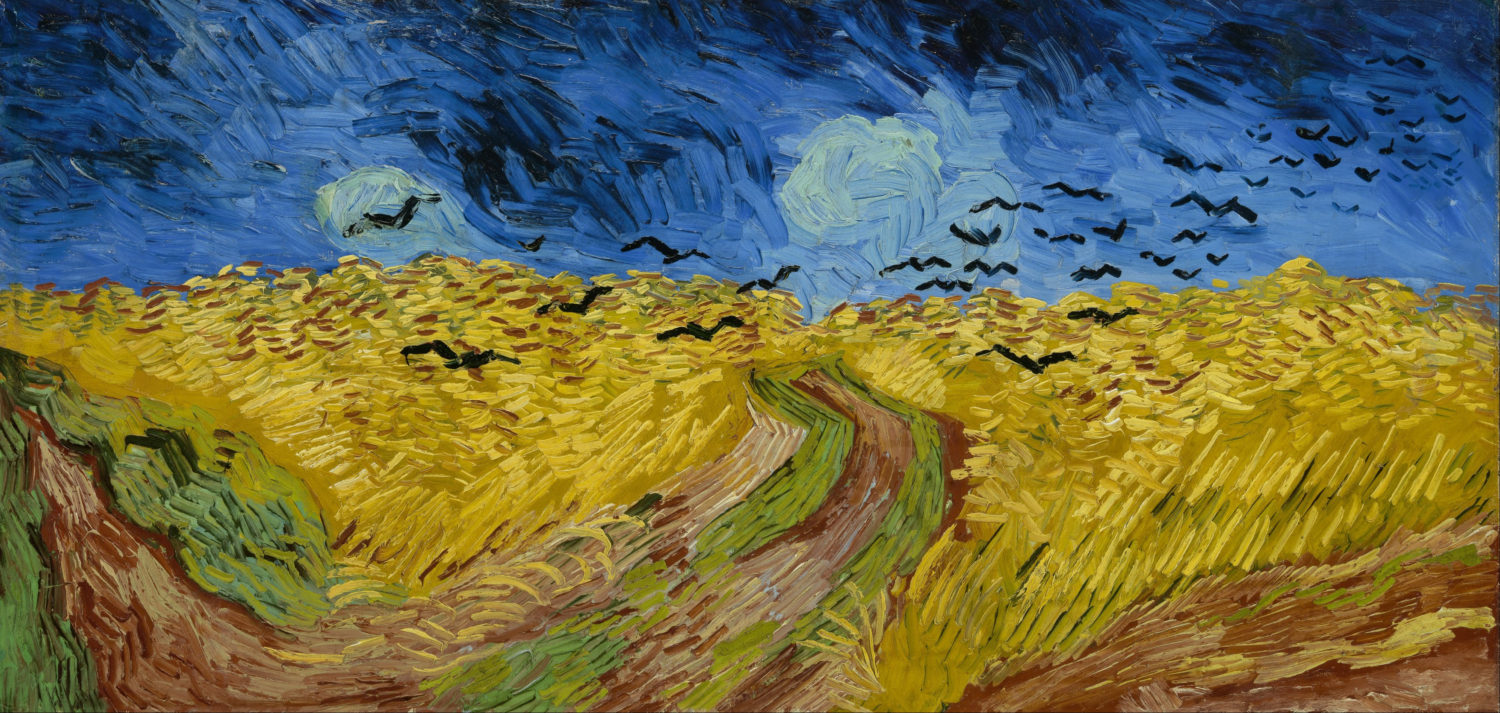
In 1905, accompanied by the artist Andre Derain, Matisse (then 35) went to Collioure in South West France, near the Spanish border. Here he moved on from Neo Impressionism to a new style, Fauvism, which abandoned classical perspective, placing the perceived image on the canvas surface and putting emphasis on the vivid use of colour to portray emotion. The work produced put Matisse at the forefront of contemporary art and a huge influence on artists as diverse as Hockney and Pollock. Also the centre of gravity of world art moved to the Mediterranean; Renoir, Picasso, Cezanne, Braque, Dufy, Signac and many more.
The Dance was a preparatory painting for a 1909 commission from Sergey Shchukin, it is painted in oil on canvas, is 260 X 390 cm and is in MoMA, New York.
The painting is largely abstract, throwing all the conventions of classic art out with no attempt to portray reality. All it seeks to do is show us joy. The picture has three elements a green foreground that could be a hill, a lawn, a carpet even; a blue background that could be the sea, the sky or even a wall, and five boneless pink figures dancing in a circle. Everything done with the minimum of detail, Matisse only put on the canvas that which was essential to depict joy.

In 1941 Matisse was operated on for cancer, leaving him partially crippled and unable to sculpt or paint. Instead he had assistants paint large sheets of paper uniformly, each with a single colour of gouache, Matisse cut shapes from these that were mounted, often overlapping, on paper to make a picture. All pretence at detail was gone. All that mattered was the composition, the line and the colour. This was collage, but taken to a new level. The results owed as much to sculpture as they did to painting. And they put Matisse once more at the forefront of contemporary art.
In 1952 Matisse (then 82) worked for two weeks to try and catch the female form with this technique, once he had mastered this he made four works of art in quick succession, the Blue Nudes (116cm X 89cm) (all four were displayed at MoMA in 2014/5). These are in no way erotic, instead they catch the female aesthetic with stillness and serenity. The intertwining of the elements give the works a complexity well beyond what you would expect of the concept and, as in The Dance, the figures are boneless, reduced to the minimum necessary. And the image is totally flat, except for where pieces of cut out paper overlap. (Image above Blue Nude II, Pompidou, Paris)

What is amazing is that elements of both The Dance and Blue Nudes can be found in the Matisse painting Le bonheur de vivre of 1905/6. The circle of dancers, the posture of the nude, the bright colours. In turn the compositions can be traced right back to works painted by Pauwels Franck in the 1580s.

